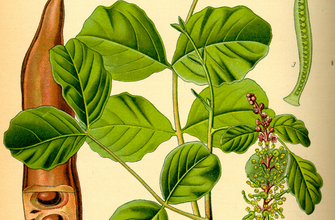Common garden and orchard insects: The 11 most damaging pests
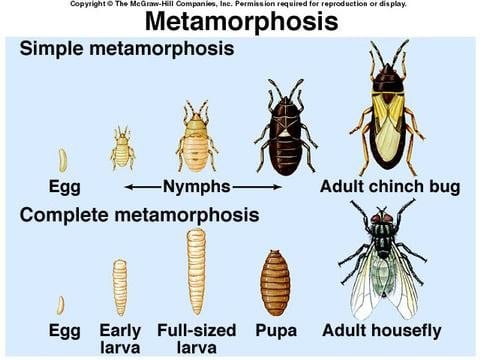
Today we will talk about garden pests, insects that attack plants and that can sometimes spoil them. It is important to know how to identify pests and what are the remedies to eliminate insects that are harmful to plants.
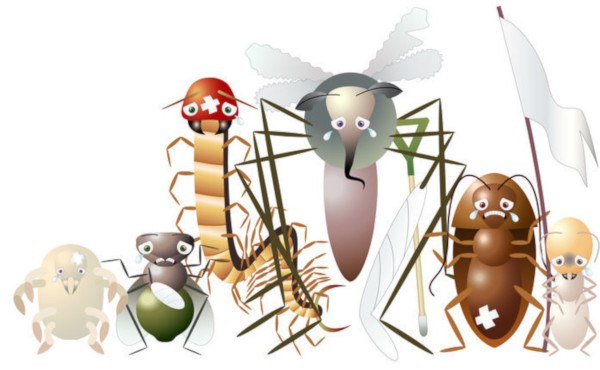
Today we will see what the pests of vegetables are, such as tomato pests, lettuce pests and insects that attack peppers, broad beans, cabbages, aromatic herbs… and other typical crops in home gardens. Many of these common insects can also become pests of garden plants such as flowers or fruit trees.
11 Types of common pests or insects in garden and garden plants
There are many other types of pests, but the ones we will look at below are the most common insects, the harmful pests that attack garden and orchard plants most often.
To facilitate identification, I will leave a short review and a photo of these types of pests and their symptoms, as well as links to other Agrohuerto posts in which we talk in more detail about these common insects. (In those articles that I leave linked you can find more photos, information about each pest, ecological insecticides and home remedies to eliminate the most harmful pests of the orchard and the ecological garden).
These are the main types of common pests or insects:
1. aphids
Aphids are one of the most voracious common orchard and garden insects, one of the most damaging pests out there. They can weaken plants in a short time as they reproduce very quickly and hundreds of them bite leaves and shoots to absorb and feed on plant sap.
Yellow or brown spots appear at the points of the bites and cause the leaves to curl up and dry, the buds to become deformed… They can also cause other problems: by sucking the sap they can transmit plant viruses, and the molasses that they secrete attracts other pests such as ants and can cause the “bold” fungus to appear.
There are aphids of all colors: green, red, orange aphids, or black aphids like these in the photograph…
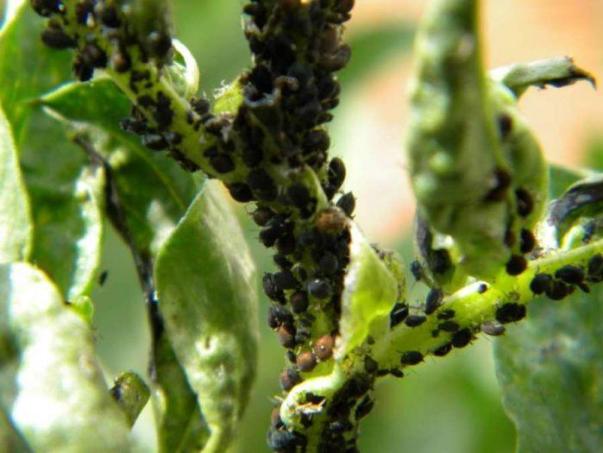
Aphids differ very well from other types of pests because they have a convex body (without differentiation of head and thorax), long legs and, on the head, two «antennas» called siphons. Some have wings, although the most common are wingless (wingless).
Aphids are very harmful pests because they can attack many types of plants: they are polyphagous. They are common insects, for example, in fruit trees and garden flowers (such as rose bushes), but also in garden plants such as beans, potatoes, cabbages, tomatoes…
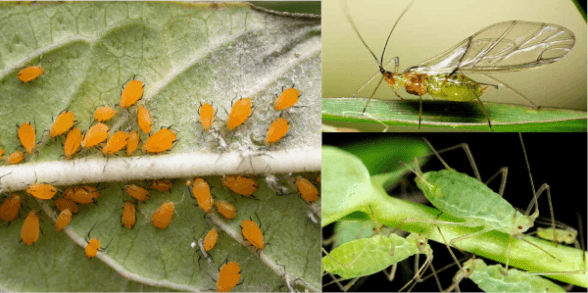
In the article Aphids:: ecological remedies to eliminate the green aphid and others you can find more about this pest and how to get rid of it.
2. Whitefly
Like aphids, the whitefly pest is very polyphagous, that is, it attacks many types of garden plants, weakening them by absorbing their sap.
The symptoms are very similar: the leaves curl up and dry, the plant weakens, the fruits stop growing…
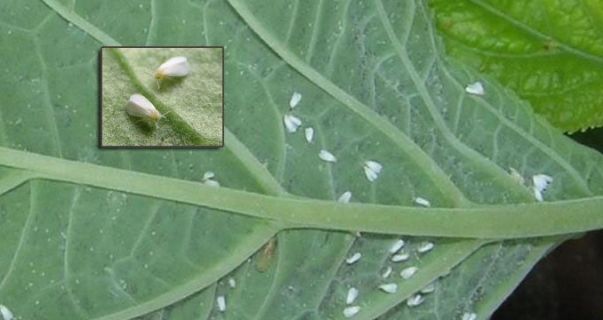
They are small white bugs with two wings that look like flies (although they are not really), and usually live on the underside of leaves.
In the post Fight whitefly in the garden: insecticides and ecological remedies you can find more information about this pest and how to eliminate it.
3. Beetles
One of the most common is Leptinotarsa decemlineata or «potato beetle». Despite its common name, it not only affects potatoes, it can also feed on other nightshades such as tomatoes or aubergines.
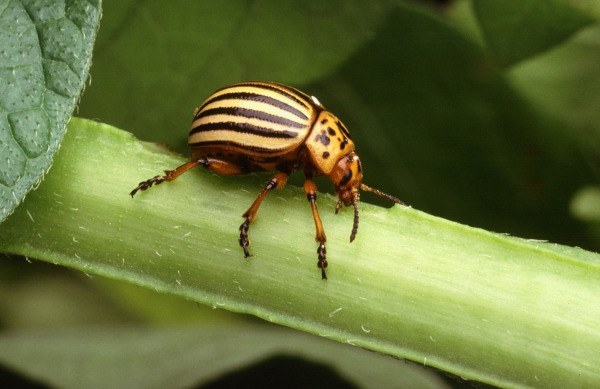
They are easy to identify by their characteristic shape and colors and by the signs on the plants: bites on the leaves and dark droppings that they leave everywhere.
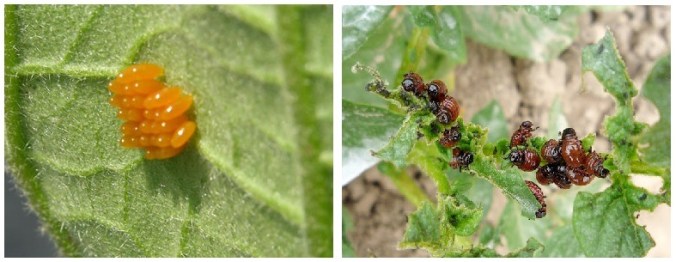
As you can see in the photos, the eggs are orange and are usually on the underside of the leaves; and the larvae (orange in color and still without the characteristic stripes of adults) are very voracious and can destroy a plant in a few days.
4. Snails and slugs
Although they are not insects, I wanted to include them in this list because they are one of the most damaging and typical pests in orchards. These molluscs attack mainly leafy vegetables: vegetables such as lettuce, Swiss chard, basil…
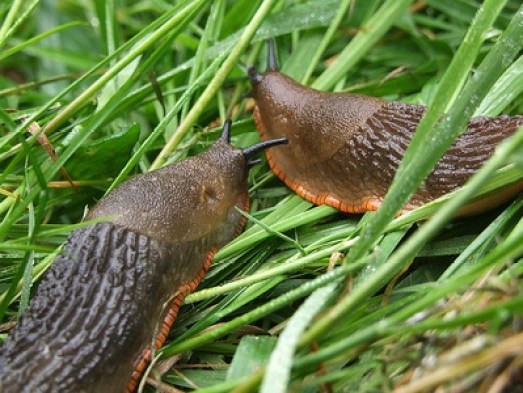
Its damage is easy to identify: large holes or bites in the leaves of plants. There are several ecological remedies to get rid of them, such as beer traps or sawdust barriers. You can read more in the article How to eliminate slugs and snails from the orchard and the garden.
5. Red spider and other mites
Mites, such as red or yellow spider mites, are common insects in the garden that can attack almost all types of vegetables and also garden plants such as roses or chrysanthemums.
Although they are tiny and cannot be distinguished well unless it is with the help of a magnifying glass, the mite infestation is easy to identify by the presence of its characteristic spider web and the yellow spots on the leaves, which gradually fade. drying up.
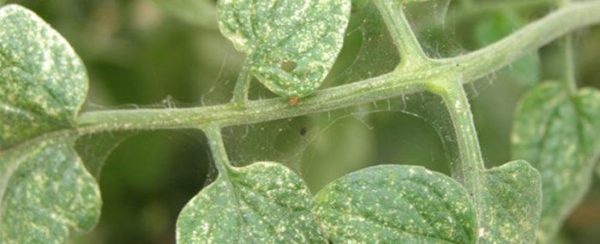
For more information about the spider mite and how to eliminate it, you can read the post Spider mite in plants: how to eliminate the plant in an ecological way.
6. Ants
They are easily recognizable, almost everyone is able to distinguish ants, so we will not dwell too much on their description. These common insects are harmful pests above all because their presence is associated with that of other types of pests, such as aphids or whiteflies.
To learn some tricks that help prevent and keep ants away from the garden, I leave you this link, where you will find some useful tips for ant pests.
7. Mealybugs
Mealybugs are very small insects, about 2 or 3 mm, that stick like limpets to the stems, buds and fruits of plants, absorbing their sap.
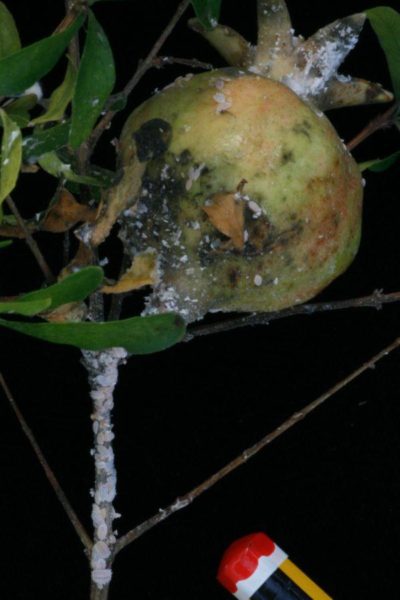
Mealybugs are very well differentiated from other common insects by the white powder that surrounds them (hence their name). Like aphids and whiteflies, they secrete honeydew, so this moisture can favor the appearance of the black fungus and also attracts ants.
Mealybugs are common insects on garden plants, since they tend to attack citrus and other fruit trees, ornamentals such as rose bushes, geraniums, oleanders… and aromatic plants. In addition, it is one of the typical and most damaging pests of garden plants such as cucurbits or nightshades.
In the article entitled Mealybugs on plants: how to eliminate a cottony mealybug pest you can find some ecological remedies to eliminate these insects.
8. Nematodes
Nematodes are not really insects, they do not have legs, antennae or wings… They are microscopic worms that cannot be seen with the naked eye but that can infect the soil and attack the roots of plants causing significant damage. They are a serious problem because they are difficult to eradicate. It is best to always take action to prevent them and, if they are already on the ground, use soil disinfection methods such as solarization.
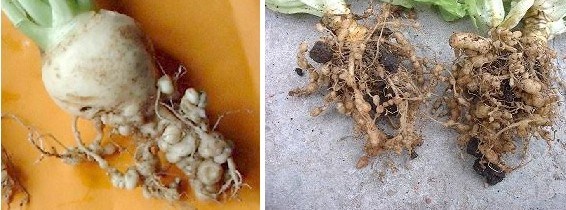
They mainly affect root vegetables and bulbs (potatoes, beets, carrots, onions…), but they can also attack other garden crops such as lettuce or tomatoes.
The main sign of nematodes are nodules on the roots (spherical bulges), and the general symptoms are wilting and dwarfing of the plants, yellow leaves (which dry up little by little) and can even cause the death of the plant. plant. In this link you can read more tips to know what to do if your plants have been attacked.
9. Thrips
They are very small bugs but no less harmful. Thrips are common insects on garden plants and garden flowers.
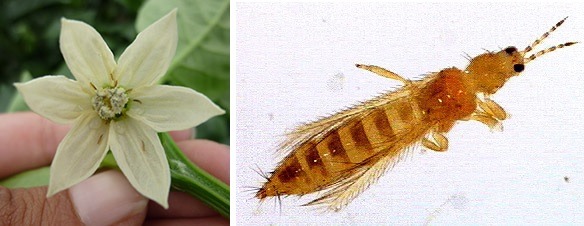
They have an elongated, tubular body, usually with transverse stripes or bands, and they move very quickly. They are common insects in the garden, typical pests of crops such as tomatoes, lettuce, aubergines, strawberries or legumes such as beans. They are located on the leaves, on the underside of the leaves and on the fruits and use their small mouthparts to scratch or scratch the plant surface, causing small silvery or translucent spots that later become necrotic, turning dark. Against them you can use ecological remedies such as neem oil. You can see more photos and ecological remedies against thrips in this post that Sandra wrote.
10. Leafminers
Leafminer flies of the Liriomyza family are common garden insects. They are small flies, about 2 mm and black and yellow. They are known as leaf miners because these insects bite or puncture leaves to feed and lay eggs inside.
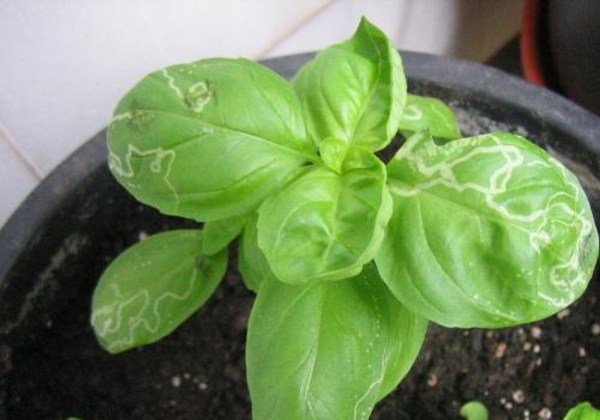
Once the eggs are laid in the thin layer between the upper and lower sides of the leaf, the larvae grow inside, feeding on it and making very characteristic galleries (like irregular undulations all over the leaf) that later become necrotic and dry..
This typical garden pest can affect the leaves of many types of plants: lettuce, spinach, Swiss chard, solanaceous plants such as tomatoes, peppers or aubergines, tubers such as potatoes, or cucurbits such as melons and watermelons.
11. Caterpillars and worms
Leaf-eating caterpillars and worms are common and very damaging pests. In the first phase or larval phase they are caterpillars or small worms and, after pupating, they become butterflies or moths.
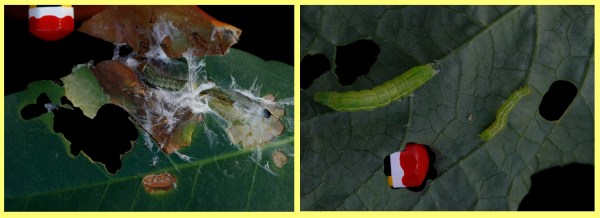
There are many types of caterpillars or lepidoptera, although some of the most common in the garden are the tomato moth or Tuta absolute and the Helicoverpa armiguera (known as tomato caterpillar or heliotis), which can affect many types of garden plants such as tomatoes, lettuce, peppers, beans, strawberries…
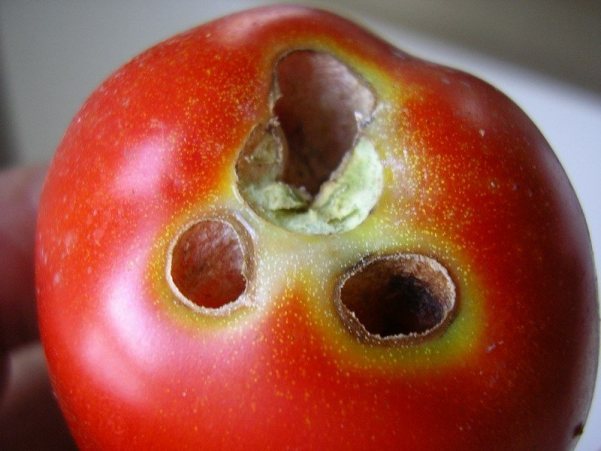
The main damages are large bites in the leaves and holes in the fruits and stems. In this post on how to eliminate a helicoverpa plague you can see some ecological remedies.
It is also a very good idea to use blue traps to capture adult specimens (butterflies and moths) and prevent them from reproducing, leaving eggs all over the plant from which caterpillars and worms hatch. Álvaro told us about this and other remedies in the article about the cabbage butterfly, where you can read other tricks to get rid of this type of common insect on garden plants.
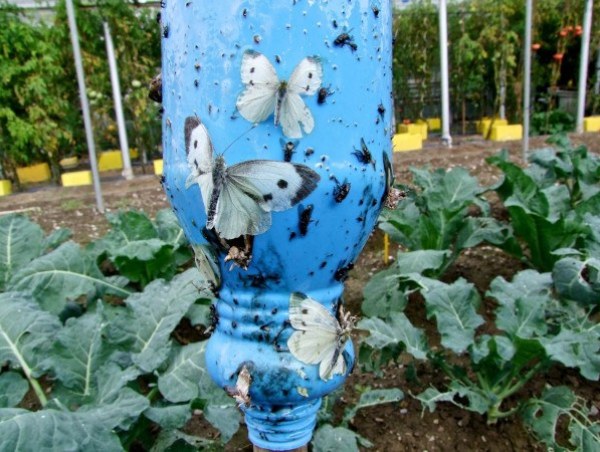
Other insects on plants
These that we have seen are just a few, but there are other common insects on orchard and garden plants that can become crop pests, such as leafhoppers or leafhoppers, field bugs or substrate flies.
Do you know other typical garden pests or common insects that have attacked your plants? You can complete the information in the comment thread or leave any questions that may have arisen.
References
- O’Farrill-Nieves, H. & Medina Gaud, S., 2007. Common garden pests, identification and integrated management. University of Puerto Rico, Agricultural Extension Service.
- Forlin, AM, 2012. Identification of insect pests in organic horticultural crops. Alternatives for its control. Ed. Technical Report – Series: Rural Extension. National Institute of Agricultural Technology (INTA). Argentinian republic.
- Bueno, M., 2014. The Ecological Family Garden. RBA Books. ISBN: 9788416267323.
- Carrancio, L. et al., 2014. Description and identification of horticultural crop pests. Ed. National Institute of Agricultural Technology (INTA). Miscellaneous Publication No. 52 – Oliveros Agricultural Experimental Station. Ministry of Agriculture, Livestock and Fisheries (Rep. Argentina).

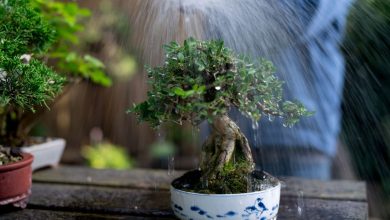
![Photo of Australia Climate: [Characteristics, Flora, Fauna and Adaptability]](https://www.complete-gardening.com/wp-content/uploads/2022/08/australia-climate-characteristics-flora-fauna-and-adaptability-390x220.jpg)
